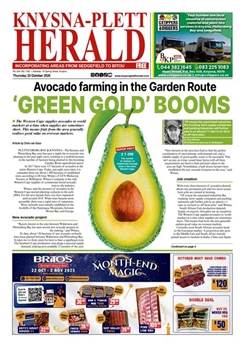Initially there was much speculation as to what type of creature it was, as the body had been stretched beyond recognition and the decomposition process was already very well advanced.
There were many who believed it to be a magical or mythological creature such as a tokoloshe, whilst others believed it to be an alien being or even a hybrid between man and monkey.
"It was a newborn female baboon, with umbilical cord still attached to her body.
The strangeness of her look came from a combination of few facts: her skull was crushed and teeth de-lined. Teeth looked abnormally big, because all the soft tissue of gums had already decomposed, exposing the parts which would be hidden under gums in a live baboon. Finally, the middle section of the body was twisted and stretched far beyond normal length," said Dr Magdalena Braum, of The Crags Veterinary Clinic, who conducted the autopsy. She estimated the time of death to have been at least 5-6 weeks prior to its discovery.
Braum, a passionate primatologist who has been studying these fascinating creatures since 1999, speculated that the infant baboon had likely died as a result of infanticide. She said that the bite marks on the skull of the deceased primate were consistent with wounds inflicted by the long, sharp incisors of a male baboon.
She said that when baboon troops were subjected to stressors, such as too many males in the troop for example, the males could become violent. She clarified that this was not necessarily the case with the troop in question.
According to Braum, female baboons tended to mate with as many males as possible, presumably to ensure the safety of their offspring. She said that it appeared that as long as a male baboon believed he could be the father of an infant, he would protect his progeny.
However, in cases where an alpha male had a strong reason to believe that the offspring was not his own, infanticide was fairly common occurrence.
According to Braum, years of observational behavioural analysis had shown that it is not uncommon for the mother primate to carry the remains of her deceased offspring for an extended period, multiple weeks in some instances. She pointed out that it was easy to see how the soft body of an infant, which is comprised of some 90% water, could become grotesquely elongated during weeks of being carried in this manner.
Braum speculated that primates seemed to understand when their babies were dead.
"The chimp mothers, for example, usually carry unconscious, but still breathing infants on their chest, but when it dies they transfer it to their backs.
Baboons often carry dead babies across their lower back, stretched over the base of the tail," she said.
Not all primate mothers that lose their infants would carry the remains. Some discard the body shortly after death whilst others appear, from a human perspective, to be unable to say goodbye for some time. "I have seen infants mummified beyond recognition, still carried around by their mothers or siblings. It is really sad to see, because they do not just carry and defend these little bodies, but they also groom them and chase the flies away, it is heartbreaking to watch," she recounted.
The national and international media as well as social media have been awash with stories about the alien-looking creature discovered near Plettenberg Bay.
Perhaps, this points towards something lacking in modern human society which drives people to crave the mysterious and mythical and leaves many willing to accept tales of fantastical creatures as opposed to the more mundane explanation backed by simple scientific reasoning.

The alien-looking remains of a female infant baboon discovered in the Tsitsikamma last week. (Photo: SANParks.)
ARTICLE: CANDICE LUDICK, KNYSNA-PLETT HERALD JOURNALIST
'We bring you the latest Plettenberg Bay | Garden Route news'
















